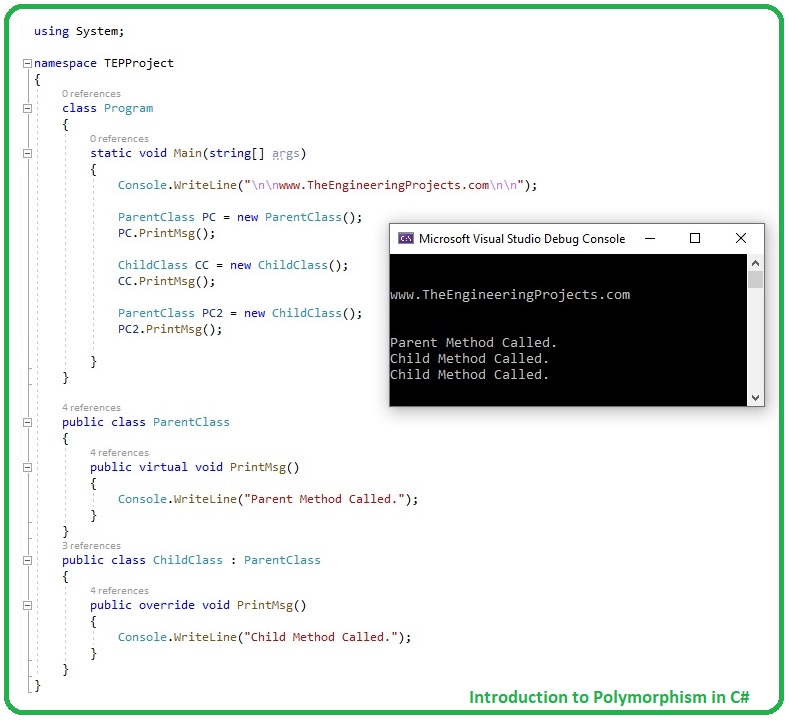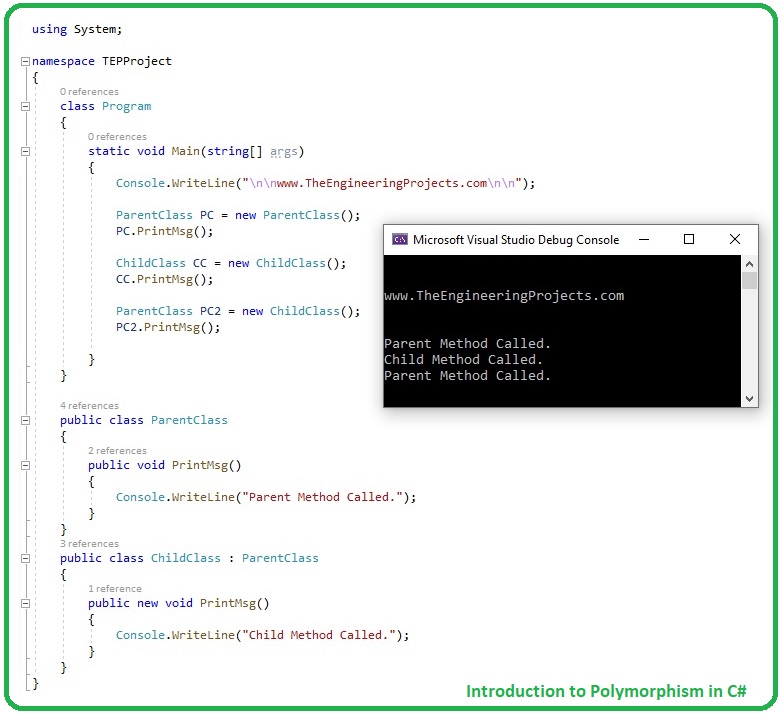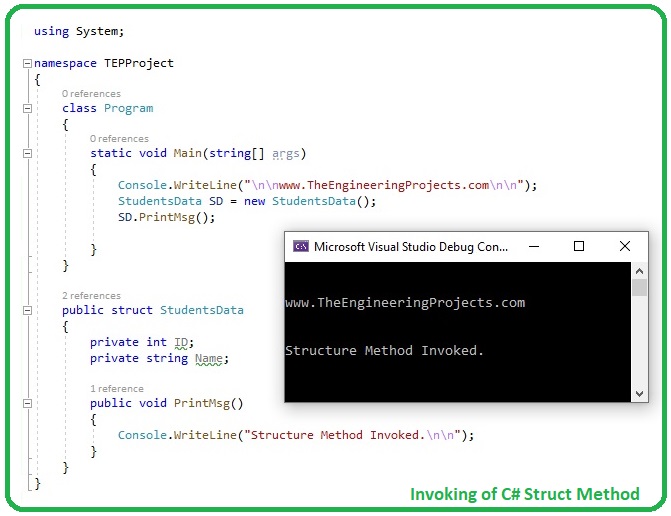

Introduction to Polymorphism in C#


Introduction to Polymorphism in C#
- Polymorphism in C# enables the user to invoke a Child Class Method & override the Parent Class Method, using a Parent Class Reference variable.
- In our previous lecture on Inheritance, we have also discussed method hiding and our last code is shown in below figure:

- In the above code, you can see that we have used method hiding by using new keyword with ChildClass Method.
- So, now instead of hiding the method let's override it and have a look at the results:

- In the above figure, you can see that I have used virtual keyword with Parent Class Method.
- Moreover, instead of new keyword, I have used override keyword with Child Class Method.
- I have used the same reference variables as I did for Method Hiding code, but here in the third case, the child class method is called.
- So, in Polymorphism, if the Child Class is involved in reference variable, then it will always override the Parent Class Method and will use the Child Class Method.
- So, we can say that if we want to completely override any function in Parent Class, then we need to add virtual keyword in its definition.
- This virtual Parent Class Method will always get override by any Base Class Method, which has the same name and has override keyword in its definition.
- But if we want to invoke the virtual Parent Class Method, then we have to use Parent Class reference variable.
- So, this third variable PC2 is the main difference between Method Hiding & Method Overriding (Polymorphism).
×
![]()








 1 user
1 user






 Continue Wishlist
Continue Wishlist





 Getting Started Guide
Getting Started Guide
 Help Center
Help Center
 Contact us
Contact us
 Doist Blog
Doist Blog
 Privacy
Privacy
 Security
Security
 Terms of Service
Terms of Service
 What's new: Channel Descriptions
What's new: Channel Descriptions





 C#
C# syedzainnasir
syedzainnasir 0 Comments
0 Comments








 2.3k
2.3k
 953
953
 921
921
 2.1K
2.1K
 Introduction to Polymorphism in C#
Polymorphism in C#
Polymorphism C#
C# Polymorphism
Introduction to Polymorphism in C#
Polymorphism in C#
Polymorphism C#
C# Polymorphism

 Thursday, November 21, 2019
Thursday, November 21, 2019
























